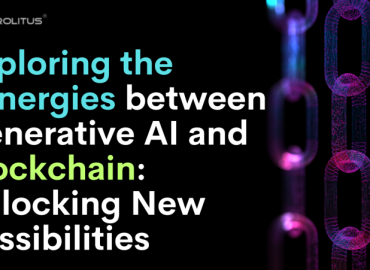Art tokenization is a contemporary approach to art investment and ownership, leveraging blockchain technology to fractionalize ownership of a physical or digital artwork. This process involves converting the value of an artwork into digital tokens, which are then made available for purchase. Each token represents a fraction of the artwork’s ownership, allowing multiple investors to hold a stake in a single piece of art.
Tokenization in the World of Art
In 2022, the traditional global art market held significant value, boasting a worth of over $65 billion, notwithstanding the challenges experienced during the pandemic. The advent and assimilation of Non-Fungible Tokens (NFTs) in the creation and commercialization of artworks have ushered in an expanded horizon for this market.
Despite encountering substantial obstacles in the preceding year, the realm of NFTs, including the broader cryptocurrency space, has demonstrated remarkable resilience and momentum. Recent statistics reveal a formidable upward trajectory in NFT sales, with data from Statista indicating that the cumulative sales of Art NFTs reached approximately $19 million between December 2022 and January 2023. A subsequent surge in 2023 saw this figure escalate to an impressive vicinity of $80 million.
It’s unmistakable that art tokenization is undergoing a dynamic evolution, revolutionizing conventional perceptions of art ownership and the valuation of unique artistic creations. Prior to blockchain technology innovation, the acquisition and sales of art predominantly transpired in global galleries and auctions, largely restricting asset ownership and collection to a wealthier demographic.
The emergence of NFTs heralds a transformative era where art ownership is seamlessly digitized. This innovation facilitates the fractionalization of art, enabling the partitioning and sale of artworks to a diverse array of individuals at more accessible price points, thereby democratizing access and enhancing liquidity.
NFTs symbolize a groundbreaking paradigm, empowering the digitization of ownership rights pertaining to unique artistic works such as paintings and photographs. They facilitate the generation of secure, blockchain-based certificates of authenticity for artworks.
Over recent years, NFTs have captivated significant global interest and witnessed robust adoption, characterized by notable sales and high-profile auctions that have commanded headline dominance. A quintessential illustration of this trend materialized in 2021 when an illustrious NFT artwork by the renowned artist Beeple commanded a staggering $69 million at a Christie’s auction.
Navigating through 2023, the trajectory of the Art NFT market appears to be characterized by sustained growth and a proliferation of mainstream acceptance. This evolution heralds a period of exhilarating prospects for artists, collectors, and the broader contours of the art industry.
What is Art Tokenization?
Art tokenization is the innovative process of transforming the ownership rights of a unique artwork, like a painting or photograph, into a digital token securely stored on a blockchain. These digital tokens, known as Non-Fungible Tokens (NFTs), serve as official certificates of authenticity and ownership. They facilitate the secure and transparent transfer of ownership and provenance information of the artwork.
Tokenization instills each art piece with a sense of scarcity and uniqueness. It allows collectors to possess and trade digital representations of artworks, each holding intrinsic value, enhancing their appeal and marketability. This revolutionizes the art market by offering a novel way to own and interact with artistic creations.
Is Art Tokenization Lucrative in 2023?
It is undeniable that the NFT market is poised for remarkable expansion in 2023 and the subsequent years. The preceding years have witnessed unprecedented sales records in the realm of NFT art, along with a burgeoning interest emanating from conventional institutions and galleries. As familiarity and knowledge regarding NFTs continue to flourish, a trajectory marked by innovation and substantial growth appears to be inevitable in this vibrant domain.
However, the journey of art tokenization isn’t devoid of complexities and challenges. Pertinent issues such as the absence of robust regulatory frameworks and the environmental ramifications associated with blockchain technologies are sources of considerable concern. It is imperative for stakeholders within the industry to rigorously engage with these challenges, fostering a pathway toward sustainability and conscientious stewardship in the evolution of NFTs.
In spite of these hurdles, the transformative potential of NFTs within the artistic landscape remains profoundly significant. With thoughtful investment and strategic focus, NFTs harbor the promise of becoming an integral and revolutionary facet of the art market. This evolution carries the potential to unlock unprecedented opportunities, benefiting artists and collectors by cultivating a vibrant and diversified artistic ecosystem.
Differences Between Tokenized and Non-tokenized Art
| Aspect | Tokenized Art | Non-tokenized Art |
| Ownership | Fractional ownership is possible, allowing multiple people to own a piece of art. | Ownership is usually singular, typically owned by one person or entity. |
| Accessibility | Highly accessible to a global audience due to digital representation. | Accessibility is limited to physical locations such as galleries or museums. |
| Transaction Method | Transactions are primarily conducted online, using cryptocurrency. | Transactions often occur in traditional settings like auctions and galleries. |
| Verification | Blockchain technology is used for verification and authentication. | Verification typically requires expert appraisal and physical authentication. |
| Liquidity | Higher liquidity due to ease of buying/selling fractions of art. | Lower liquidity due to the complexity involved in selling physical artworks. |
| Security and Provenance | Enhanced security and clear provenance due to blockchain records. | Provenance and authenticity are established through physical documentation. |
| Regulatory Framework | Less regulated, evolving legal and regulatory frameworks. | Subject to well-established legal and regulatory frameworks. |
| Environmental Impact | Potentially higher due to energy consumption of blockchain networks. | Generally, has a lower environmental impact. |
| Market Reach | Global market reach due to online accessibility and fractional ownership. | Market reach is often limited by geographical and economic barriers. |
How to Tokenize Art?
Creating an NFT from your artwork is an intricate journey, requiring methodical steps for fruitful realization.
Choose Your Blockchain: Initiate by choosing a suitable blockchain platform. Established options like Ethereum and Binance Smart Chain are commendable choices, each offering unique benefits.
Digitize Your Artwork: Transform your artwork into a digital image, ensuring it maintains its original allure. Acceptable formats include JPG and PNG.
Craft a Smart Contract: Utilize reputable tools like OpenZeppelin or Remix to design a foundational smart contract, setting the operational groundwork for your NFT.
Blockchain Deployment: Propel your crafted smart contract into the blockchain using facilitating tools like MetaMask or trusted blockchain explorers.
NFT Minting: The culmination is the creation of your NFT by minting it. Incorporate essential metadata, enriching the token with information like the artist’s identity and artwork’s title.
Embarking on this procedure will result in a distinct NFT, a tradable digital asset reflective of your artwork. Opting for top tokenization platforms can also expedite the process, bearing in mind the essential legal considerations inherent to the fluctuating NFT landscape.
How does blockchain revolutionize the art industry?
Blockchain technology heralds an unprecedented era of innovation in the art industry, acting as a powerful catalyst for enhanced transparency, security, and democratization. By infusing trust into the authentication process, it meticulously combats art forgery and ensures provenance clarity. Furthermore, artists are empowered directly, circumventing traditional intermediaries, resulting in improved financial remuneration and creative control. The advent of NFTs (Non-Fungible Tokens) on blockchains also unveils novel avenues of art tokenization platform and ownership, unlocking a realm where digital and traditional artworks intertwine seamlessly. This transformative blockchain wave is reshaping the artistic landscape, fostering a resilient, inclusive, and revitalized ecosystem.
Benefits of Art Tokenization
| Benefits of Art Tokenization | Description |
| Enhanced Liquidity | Tokenization makes art more accessible and tradable, increasing liquidity in the art market. |
| Global Reach | Art tokens can be bought and sold worldwide, expanding the potential market for artists. |
| Fractional Ownership | Tokenization allows multiple investors to own a share of an artwork, making art investment more accessible. |
| Improved Provenance Tracking | Blockchain technology ensures the authenticity and origin of artworks are securely and transparently recorded. |
| Reduced Costs | Tokenization can reduce various costs associated with art transactions, such as fees and commissions. |
| Enhanced Security | The secure nature of blockchain technology offers improved protection against fraud and theft. |
| Direct Artist-to-Collector Transactions | Tokenization facilitates direct transactions between artists and collectors, enhancing artists’ earnings and collectors’ access. |
| Creative Control | Artists can retain greater creative and financial control over their works through tokenization. |
Final Thoughts
In simple terms, art tokenization is changing how we see and engage with art. Thanks to blockchain technology and Non-Fungible Tokens (NFTs), the art world is becoming more open, clear, and supportive of artists and collectors.
If you’re an artist, NFTs allow you to manage and profit from your own art. For collectors, they offer a fresh and exciting way to invest in special artworks. As more people use NFTs, it’ll be exciting to see how they change the art world and its role in our lives.
Prolitus: Pioneering Your Journey in Art Tokenization Excellence
Discover the forefront of innovation with Prolitus, leading your artistic endeavors to unparalleled heights in the realm of tokenization. Specializing as a remarkable Tokenization Platform Development Company, Prolitus crafts bespoke solutions that seamlessly transform physical art into captivating digital tokens. With our adept Tokenization Platform Development Services, we meticulously curate platforms that optimize the integrity, accessibility, and liquidity of your cherished artworks. Entrust Prolitus to pioneer your journey, ensuring each masterpiece flourishes in the dynamic digital marketplace, enhancing visibility and investment prospects. Experience the quintessence of excellence and innovation in art tokenization with Prolitus.





